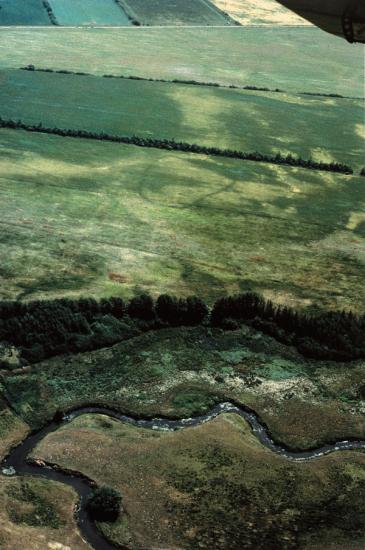Source - http://www.pasthorizonspr.com/index.php/archives/08/2014/danish-iron-age-village-to-be-re-born?

Lyngsmose og Hover viewed from the north in 1993. Image: Palle Eriksen
Situated in a Danish cornfield on a crossroads between Ølstrup and Hover lies the remains of Lyngsmose, an Iron Age village of international importance now buried beneath the soil. However an exciting collaboration means that Lyngsmose will spring to life again after 2000 years.
A joint steering committee between the various parish organisations is to administer a large renewable energy grant from the Environment and Technology Committee to facilitate the realisation of a common dream to “re-visualise” the 2000 year old space into the present.
Currently, acquisition of the land is in progress along with building permits and the creation of a joint Lyngsmose Association.
A recreated prehistoric village
Using the latest knowledge of the period Lyngsmose will be recreated as a prehistoric village. In addition there will be a visitors centre erected across the river along with facilities for school groups.
When completed, it will be “a place where tourists and locals interested in cultural history will want to visit to understand more of this period,” says archaeologist and curator Palle Eriksen from Ringkøbing-Skjern Museum.
A rare site
Lyngsmose is a rarity among the many Iron Age settlements recorded in Denmark, as it has both a turf rampart and a moat. The only other similar site is at Borremose in Himmerlandsbanken.
The defended settlement was first constructed about 100 BCE and was excavated by Ringkøbing-Skjern Museum and the University of Copenhagen between 2000-2002 after being discovered by aerial photography in the 1990s. The settlement, measuring 90 metres x 60 metres, consisted of 15 longhouses along with two further smaller structures, a moat, rampart and four entrance gates.
There is a great deal of pride about prehistory in the area and people are looking forward to showing off Lyngsmose to tourists and locals alike, says Miranda Andersen.
Source: Ringkøbing-Skjern Museum